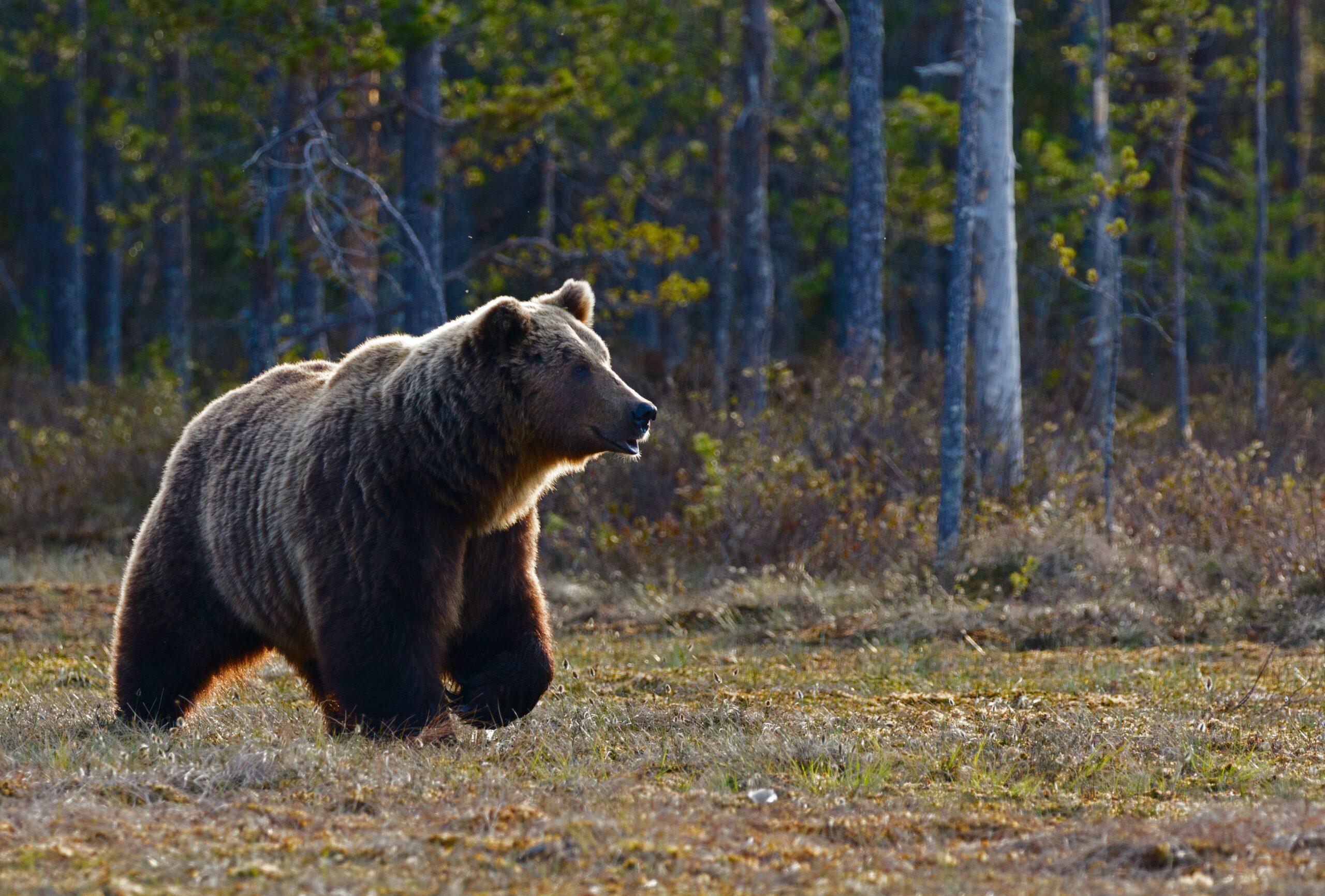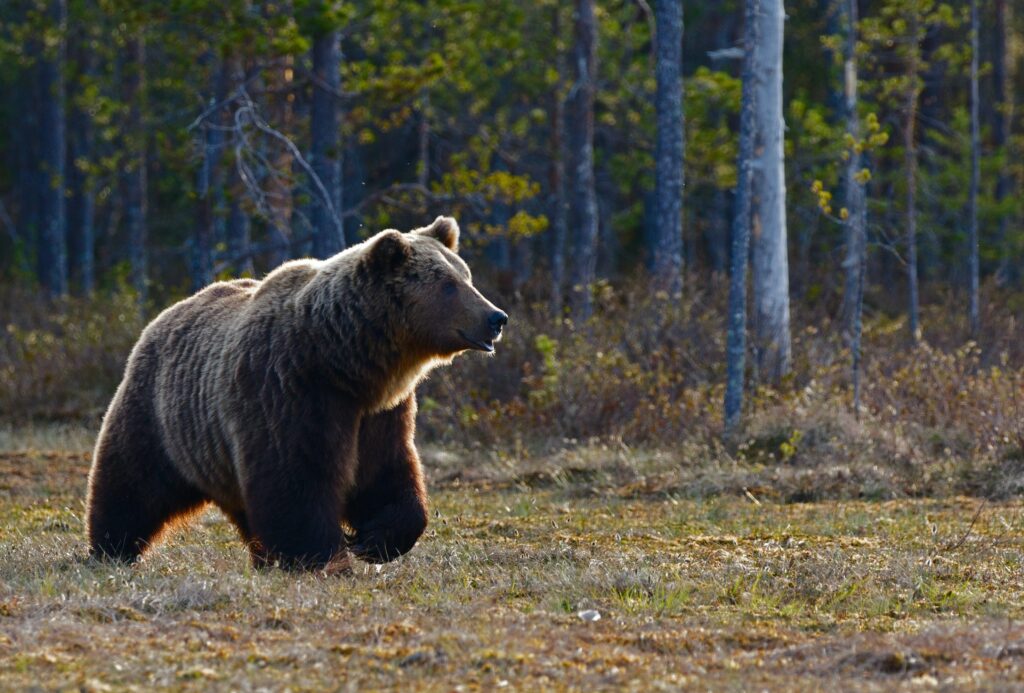
Hey, outdoor enthusiasts! 🌲 Ready for an epic adventure in the jaw-dropping Yellowstone National Park? Along with its famed geysers, expansive forests, and awe-inspiring wildlife, there’s something else you absolutely need to prepare for: bears. Yep, these magnificent creatures are a big deal in Yellowstone park, and not just for the photo ops. Let’s deep-dive into some bear safety tips because the best trip is a safe trip!
Know Your Bears 🐻
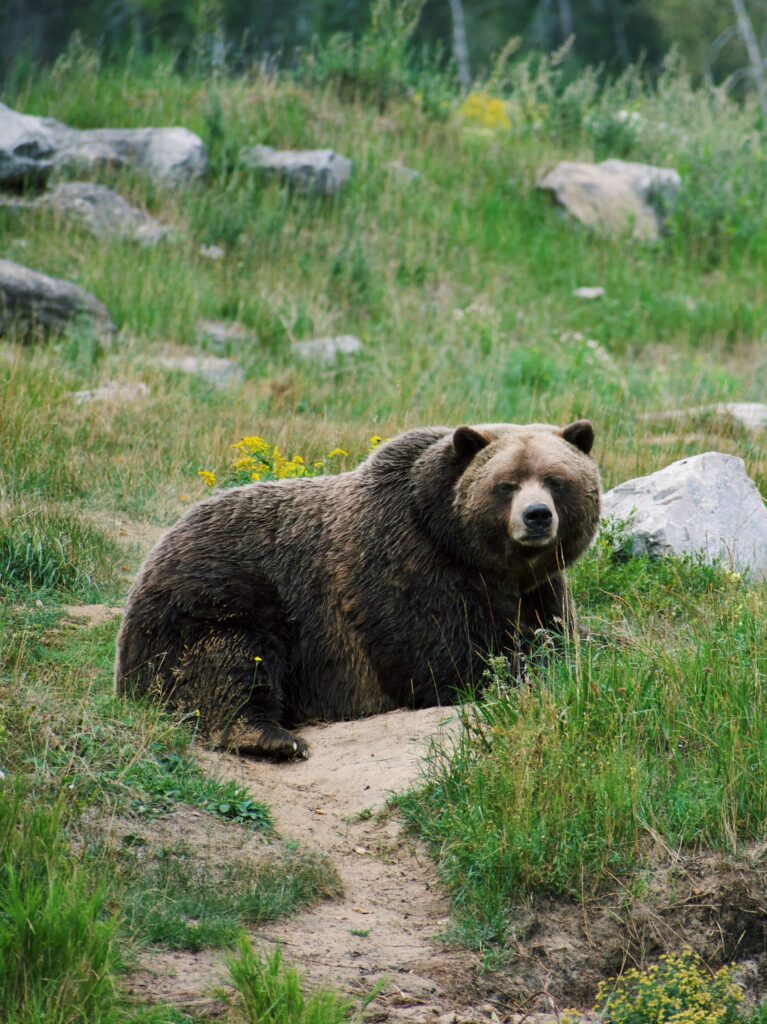

First up, let’s get to know the “locals.” The Yellowstone region is home to two species of bears: black bears and grizzly bears. Distinguishing between the two is crucial because your reaction to an encounter might differ depending on the bear type. Grizzlies have a noticeable hump on their shoulders and a rounded face. Black bears, in contrast, have a flatter profile and no shoulder hump. So, eyes open and cameras ready—but from a safe distance!
Be Smart in Bear Country: Make Loud Noises, But Skip the Bells 🔔
Making noise is one of the best ways to keep both you and the bears safe. You want to alert bears to your presence so as not to surprise them. Speak loudly, sing, or occasionally call out, “Hey, bear!” to alert any that might be nearby. But leave those jingling bear bells at home—some park rangers jokingly call them “dinner bells” for bears. Not exactly the message you want to send!
Stick Together: There’s Safety in Numbers 👫
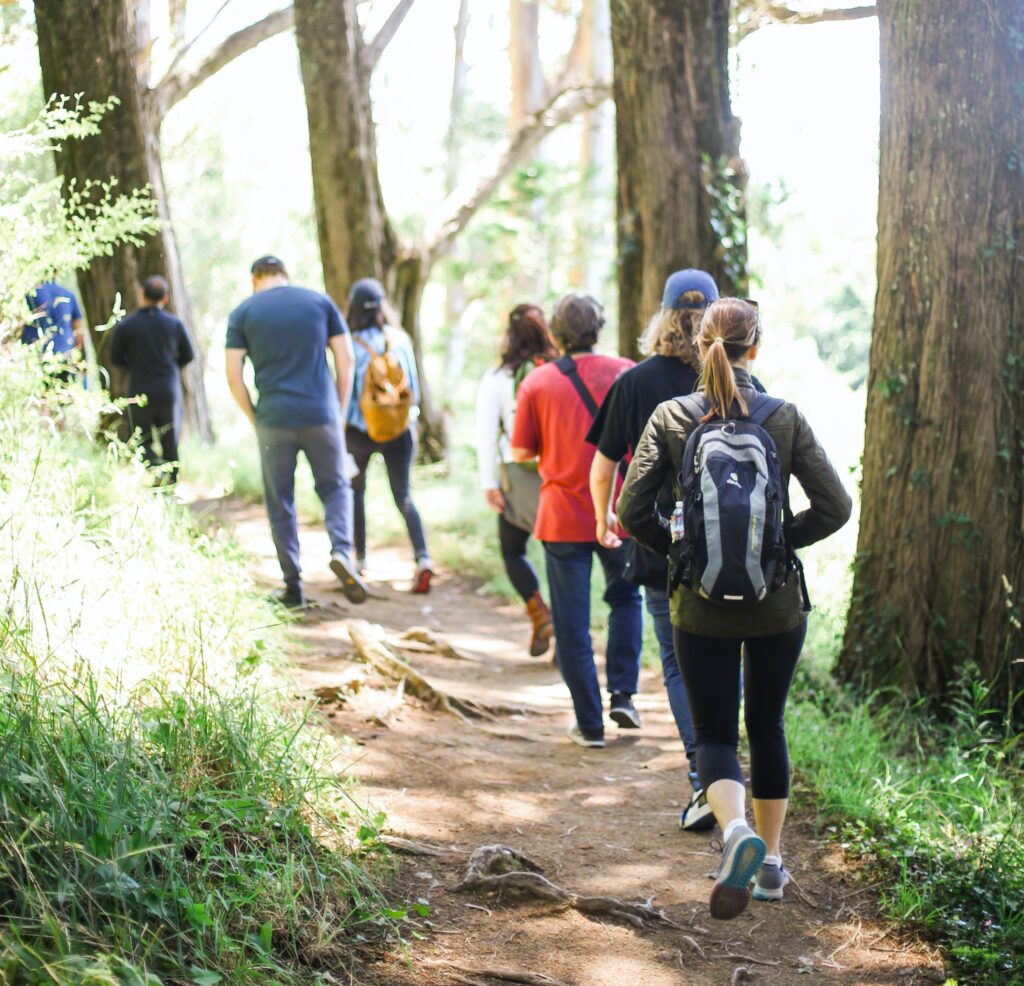
Whenever possible, hike in groups. Multiple people make more noise and can look more intimidating to bears. Plus, there’s always strength in numbers if you need to scare a bear away. A lone hiker is much more vulnerable, so grab your friends or join a guided hike. If you are hiking alone you can play a podcast (people talking- not music) as a sort of substitute. All the latest reports from bear attacks occur when a person is hiking or hunting by themselves.
The Essential Gear: Bear Spray 🌶️
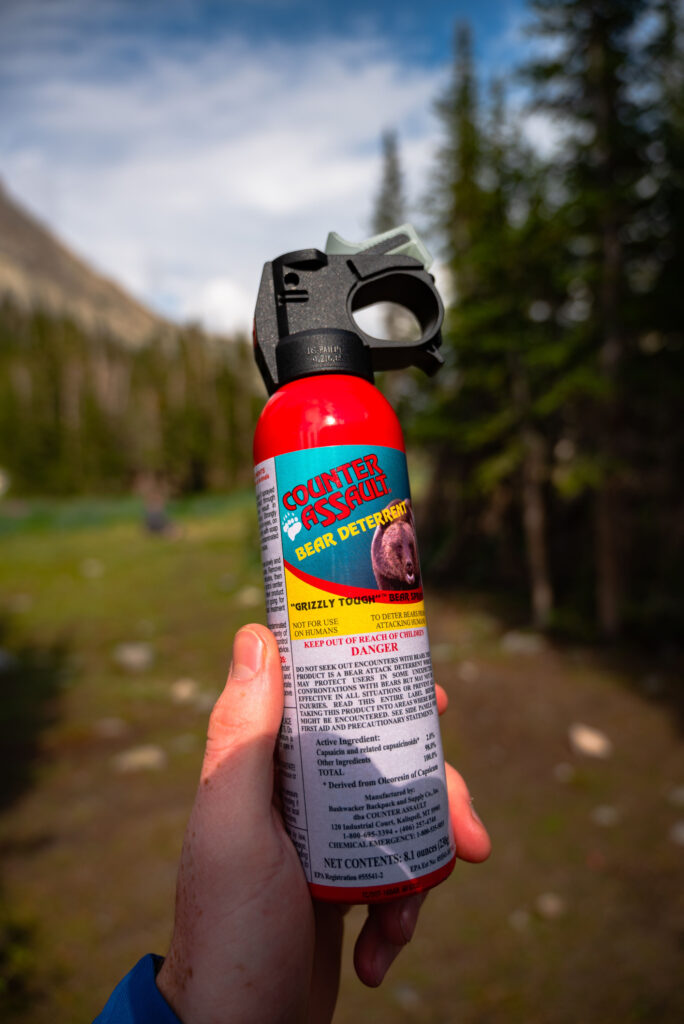
Bear spray is a must-have and you need to carry bear spray whenever you are hiking. It’s a powerful pepper spray that can give you crucial seconds to get away safely in the worst-case scenario. However, bear spray should be your last resort. Always keep it easily accessible—in a hip holster or chest strap, not buried in your backpack. And please, don’t use it like bug spray; it’s potent stuff designed to stop a charging bear in its tracks. You can buy bear spray in some of the concession areas or there are bear spray rental places around the Yellowstone area. Also you cannot fly with bear spray, not even in your checked luggage. You will see signs at the area airports reminding you to dispose of it prior to going past security.
How to Use Bear Spray: A Step-by-Step Guide 🌶️
Alright, so you’ve got your bear spray, and it’s snugly stowed in its holster. But owning bear spray is just the first part; knowing how to use it effectively could be a game-changer in a bear encounter. Here’s your step-by-step guide on how to unleash this potent deterrent like a pro. See below for a video on how to use it.
1️⃣ Get Familiar with Your Bear Spray
Before you even hit the trail, read the instructions on the bear spray canister. It should tell you the spray’s range (usually around 15-30 feet), its active ingredients, and the duration of the spray. Familiarize yourself with the safety clip or cap that prevents accidental discharge.
2️⃣ Keep It Accessible
When you’re out hiking, your bear spray should be within arm’s reach at all times. This means it should be in a holster on your hip, or strapped across your chest. Tucked away in your backpack won’t cut it—you won’t have time to dig around for it in an emergency.
3️⃣ Gauge the Situation
If you see a bear in the distance and it hasn’t noticed you, there’s no need to use bear spray yet. Start by speaking calmly and firmly to alert the bear to your presence, and slowly back away. However, if the bear starts to approach or charge, that’s when you’ll need to act fast.
4️⃣ Remove the Safety
Most bear sprays have a safety clip or cap. Remove this as calmly and quickly as you can. Make sure you’re holding the canister properly, so you don’t spray yourself. Usually, you’ll grip it like you would a small fire extinguisher, with your finger ready to press down on the trigger.
5️⃣ Aim and Spray
Hold the canister out in front of you, arm extended. You’ll aim slightly downwards to create a wall of spray between you and the bear. If the bear is charging, aim for its face. Press the trigger and deploy a steady, 1–2 second burst.
6️⃣ Assess and Act
After the initial spray, pause to see how the bear reacts. If it continues to approach, use another short burst. If the bear turns and runs away, seize the moment to leave the area as quickly and safely as possible, while keeping an eye on the bear.
7️⃣ Report the Incident
Once you’re safely out of the situation, report your bear encounter and the use of bear spray to park rangers. This helps them keep tabs on bear activity within the park and can provide valuable information for other visitors.
⚠️ A Few Warnings ⚠️
- Bear spray is not a repellent. Don’t spray it on your gear or clothing. It’s a last-resort deterrent, intended to be sprayed directly at an aggressive bear.
- Bear spray is powerful stuff, so use it responsibly. Never play around with it; accidental discharge could lead to injuries.
- Make sure you’re upwind or crosswind from the direction you’re spraying. The last thing you want is for that potent mist to blow back in your face.
Here is a video by the Yellowstone Forever Institute on how to use bear spray. Learn more at the Institute here.
Pay Attention
Some park areas maybe closed due to high bear activity in the area. Please pay attention to warning signs about these bear management areas.
Do’s and Don’ts During a Bear Encounter 👀
Do:
- Speak calmly and firmly.
- Slowly back away without turning your back.
- Make yourself look bigger by holding your arms or backpack above your head.
- Keep your bear spray at the ready.
Don’t:
- Run! Seriously, don’t even think about it. Bears instinctually will want to chase if you start running. And you cannot out run a bear.
- Yell or make high-pitched sounds.
- Drop your pack—it could have food in it, and you don’t want the bear to think human food is tasty!
When Bears Get Too Close for Comfort: Best Practices 😬
Black Bear:
- Shout, clap, and make lots of noise to try and scare it off.
- If the bear keeps approaching, you can throw rocks or sticks.
Grizzly Bear:
- Lay flat on your stomach, legs slightly apart for stability.
- Clasp your hands behind your neck to protect it.
- Play dead and remain as still as you can until the bear leaves.
The Food Rules: Storage is Key 🥪
Bears have an incredible sense of smell. To prevent unwanted dinner guests, always store food in bear-proof containers called bear boxes or suspended from a tree at least 10 feet off the ground and 4 feet from the trunk. Keep your sleeping area, cooking area, and food storage area separate, at least 100 yards apart if possible. Keep a clean camp and get rid of food waste properly. Plus you don’t want bears habituated to using human areas as a food source. Also keep locked up any smelly items like sunscreen or lotions too because these could also attract bears. Never feed bears either. There is an old saying that a “fed bear is a dead bear”.
Knowledge is Power 📚
Before you set foot in bear country, make sure you and your travel buddies are educated about bear safety and bear behavior. Check to see if a visitor center offers quick bear safety courses, and some even provide bear spray tutorials.
Parting Words 🌟
Navigating bear country may seem daunting, but remember, knowledge and preparation are your best friends here. Bears are a vital part of Yellowstone’s ecosystem, and understanding how to share their home respectfully ensures a safer trip for you and a better life for them.
So gear up, leave the dinner bells at home, and get ready for an unforgettable Yellowstone adventure. Happy trails and stay bear-aware! 🌲🐻🌳
Read More About Yellowstone
- 10 Common Mistakes to Avoid When Visiting Yellowstone National Park
- 35 Best Ways To Save Money In Yellowstone National Park 2023
- Best and Nearest Airports To Yellowstone National Park
- When Is The Best Time of Year to Visit Yellowstone?
- Morning Glory Pool At Yellowstone National Park
- What State Is Yellowstone National Park In?

